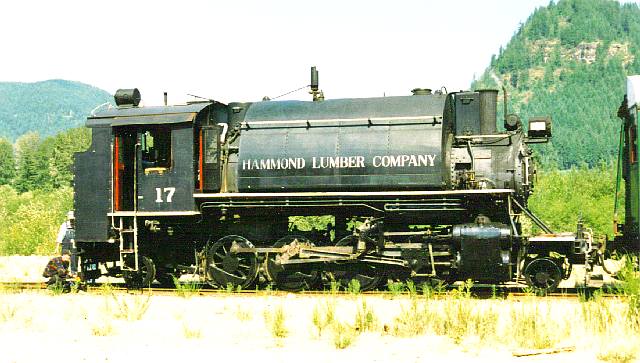In this project I am going to convert the Lionchief Plus Mikado which is traditional or 'semi-scale" sized, to a more closely scale model. As delivered, it is a 85%-90% size model of the ATSF 3129 class(the 3129 has 60 inch drivers and a 16 foot driver wheelbase, the LC+ Mikado has a 1:48 scale 14 foot wheelbase with scale 54" drivers, etc.). In my conversions, my major goal (beyond having fun doing the project) is to get a locomotive that will "mix well" alongside scale steamers. My traditional size locos won't, at least to my eye -- I'll show photos below, later.
Background: I had three LC+ steamers. I converted two (Photo 1) to more scale size models I previous posted, although not step by step like here. The third was an LC+ Mikado . But back around Christmas, I gave it and about thirty feet of Fastrack and etc., to a family we know with four kids and not a lot of money. Their dad and I had fun with the two older boys painting it in Carolina Hurricane colors and putting some decals we got at a sports store on it. Frankly it looked hideous to me, but they loved it.
The idea with my LC+ conversions is, if I can, to find some locomotive with the same or similar wheel arrangement (e.g., a Mikado in this case) but that was about 10% smaller and convert the LC+ loco to a scale model of that. For example, at 1:48 scale the LC+ Mikado has a driver wheelbase of 14" and 54" wheels and an overall wheelbase just under 32 feet - most Mikados had wheelbases around 16", drivers of about 60" and wheelbases near 34-36 feet. But several early Mikado classes did match the LC+ Mikado's dimensions: the Virginian MA class (Baldwin, 1907) is a near perfect match in ever way, and several UP classes as well as Mikados of other smaller western RRs are close.
Photo 1: Previous work: LC+ Pacific, with taller, larger cab, various equipment added for a more 'industrial look, and other changes, including a new, larger 8-axle tender, to give it a scale look and nearly identical dimensions to any of several early ATSF Pacific types. LC+ Hudson, with one axle removed, is nearly the exact dimensions of several ATSF Prairie classes. I picked 1856 because the sand dones match well, and I have a photo of it that I could follow. LC+ tender has been converted to an almost exact scale model of the "small" ATSF standard tender as converted to oil in the 1940s.
My gold standard for "does it mix with scale locos?" is to put a loco around Lionel's scale Atlantic. Here is the Mikado back to back with that loco. Now, when completed, this LC+ Mikado will be a model of a small Mikado, so it it should (and will) look smaller than the Atlantic, which is a really big Atlantic. But one thing that is not "small" on a small loco is the cab. Compare the cabs. The Mikado lacks about 1/4 inch (a scale foot) of cab headroom. Usually, if you put a scale headroom cab on a traditional or semi-scale loco, it will look much more scale size, even if you leave the rest of the loco alone.
I do nearly all my conversions and repainting, etc., without every taking the body off the loco: just leave well enough alone. It runs fine, so i won't distrub its innards. To do this work I put the entire loco in a plastic freezer bag except for the cab, which iwas exposed, then taped (masking tape, so filings etc could not get in unwanted places. Ten minutes with a band saw and bench sander resulted in what you see below.
Note the cab is also a bit too narrow . . .
I made side panels for the new cab out of 1/10 inch styrene, they are a scale foot higher, and foot longer, than the stock cab. I then attached them with epoxy and screws.
Next I filled in the profile of the roof with styrene pieces epoxied on, and extended the rear cab floor, etc.
To make a curve piece of styrene for the roof, I took three layers of thing (.04) styrene, applied glue between them, them taped them around a spray can of paint while the cement hardened.
I trimmed the piece a bit and glued it on the roof of the cab, then taped it. It will sit overnight at least to really harden, before the next step.
Not how well it not matches the height and width of a typical scale cab.
I will post more as I work on it more . . .







